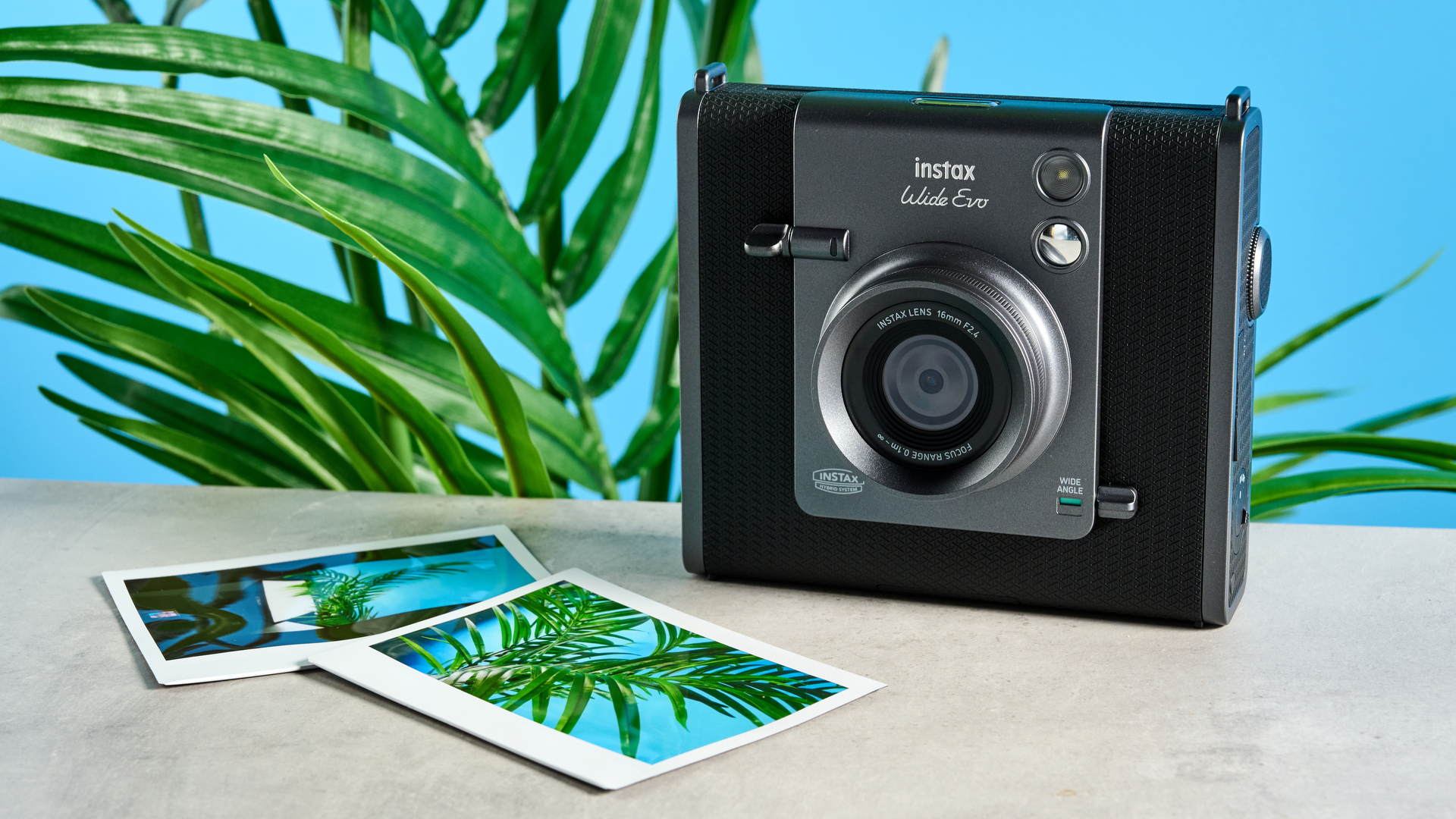
Fujifilm unveiled its latest hybrid instant camera, the Instax Wide Evo, on 21 January, and I got to spend an hour with it at the launch event. Now I’ve spent some more time with the camera, putting it through its paces in full testing, and I’ve finally come to a conclusion to the all-important question: is it one of the best instant cameras around?
The Instax Wide Evo is a hybrid instant camera, which means you can use it to click photos but also print directly from your smartphone. It’s the biggest sibling of the Instax mini Evo, and it has the widest lens on any Fujifilm instant camera yet: 16mm in its integrated Wide Angle Mode. This allows you to capture more of the scene, and you get access to 10 filters and 10 lens effects (a total of 100 combinations) to play with. Fuji has also added six film styles and redesigned the print crank and shutter release. But it’s not all unicorns and rainbows. The camera costs an eye-watering $349 while having some noteworthy shortcomings — like its battery life, limited internal storage, awkward shutter release, and more.
For the complete breakdown, read my full Fujifilm Instax Wide Evo review.
Fujifilm Instax Wide Evo review: Cheat sheet
- What is it? Fujifilm's latest hybrid instant camera with the widest lens yet
- Who is it for? For instant photographers who want lots of creative control and wide format photos
- How much does it cost? The Fujifilm Instax Wide Evo is available for $349 at Amazon U.S. / £319 at Amazon U.K.
- What do we like? The 100 effect combinations and new Degree Control option, the integrated Wide Angle mode, premium design, the new print crank, and great image quality
- What don’t we like? It’s expensive! Plus the new shutter release is awkward, and not much has changed from the Instax mini Evo
Fujifilm Instax Wide Evo review: Specs
Fujifilm Instax Wide Evo review: Price & availability

Announced in January, the Fujifilm Instax Wide Evo has a retail price of $349 at Amazon U.S. / £319 at Amazon U.K. This is Fujifilm’s most expensive instant camera, followed only by the Instax mini Evo and the Instax mini 99 ($199 each).
Other wide format cameras, like the Lomography Lomo’Instant Wide ($199), cost much less. So given its high price point, the Instax Wide Evo finds itself in the company of the Leica Sofort 2 ($399). There aren’t many other instant cameras that fall in the same price range. It’s worth noting that the Instax Wide Evo is still cheaper than the Polaroid i-2 which costs $599 for the camera alone.
As wide format cameras go, I’d recommend the Instax Wide 400 ($149) wholeheartedly, which offers gorgeous image and print quality. But if you’re set on a hybrid instant camera instead and don’t mind burning a hole in your pocket, then the Instax Wide Evo is a decent choice.
Fujifilm Instax Wide Evo review: Design & build quality

When I first held the Fujifilm Instax Wide Evo in my hands, I was immediately struck by its good looks and premium build quality. This is by far the best-looking instant camera I’ve tested yet, sporting a minimalist look. The Instax Wide Evo comes in just one colorway (black and gray) and it looks and feels like it’s worth a lot of money: from the italicized name on the front to the faux-leather-like material that wraps around its entire body.
When I first got wind of this camera prior to its release, I was worried it would be just as bulky as the Instax Wide 400, and I'm so pleased it isn't. The camera measures 5.46 x 4.92 x 2.47 inches and weighs 1.08lbs (camera only) — a little lighter than the Instax Wide 400. It’s extremely comfortable to hold even without a sculpted grip, and it isn't difficult to keep hold of at all, especially when gripping it with both hands. While the Instax mini Evo sports a retro look, the Instax Wide Evo feels more modern — the Evo-lution truly continues.
Like the Instax mini Evo, internal storage is limited to 45 photos and you get a slot for a microSD card to extend this. Considering that this camera costs nearly twice as much, it’s disappointing that this is still an issue.
Fujifilm Instax Wide Evo review: Lens & viewfinder
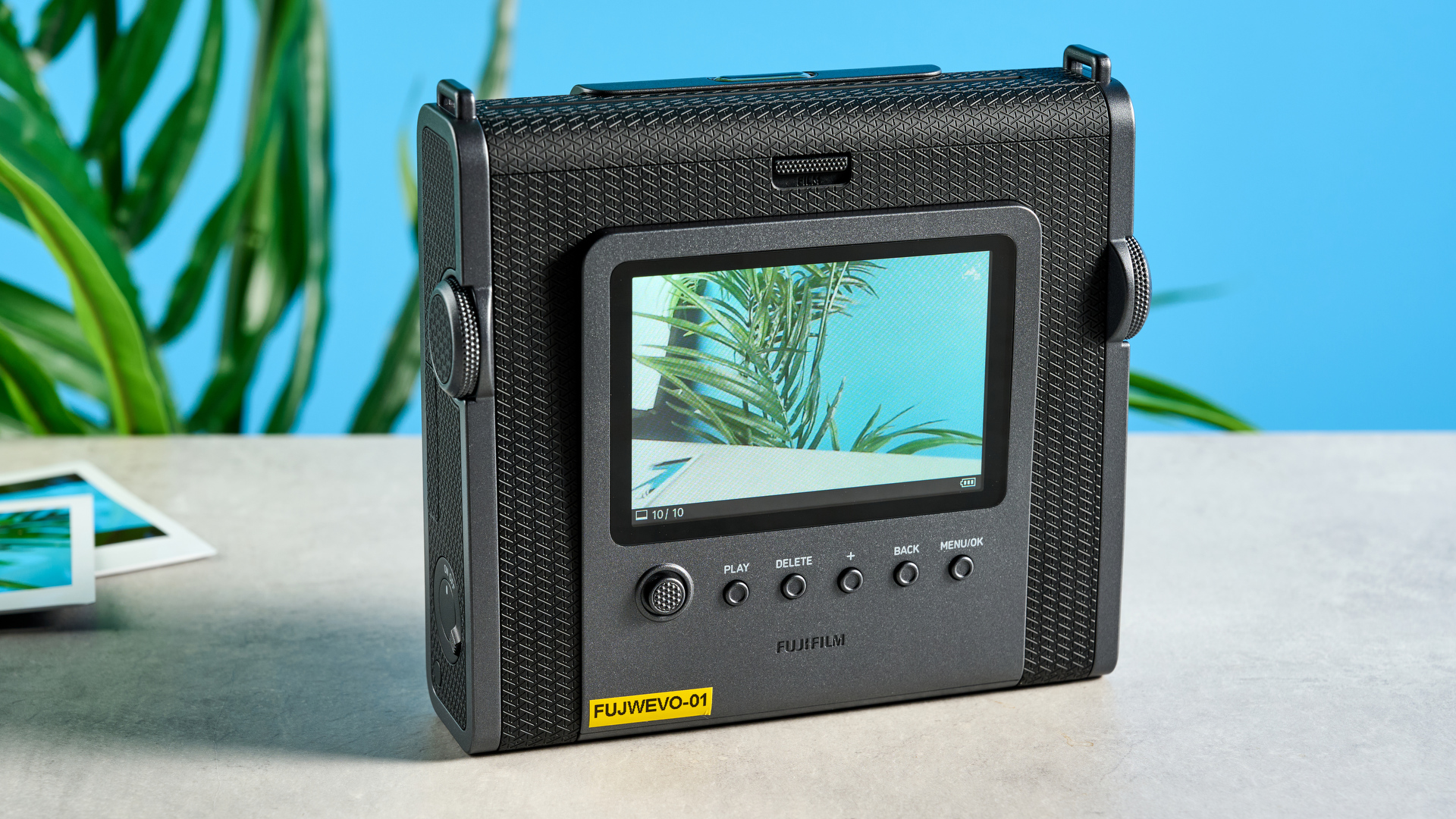
Much like other hybrid instant cameras, the Fujifilm Instax Wide Evo doesn’t have a viewfinder. Instead, it’s fitted with a 3.5-inch LCD screen which is big enough to help you frame your shots, so I didn’t miss not having a viewfinder.
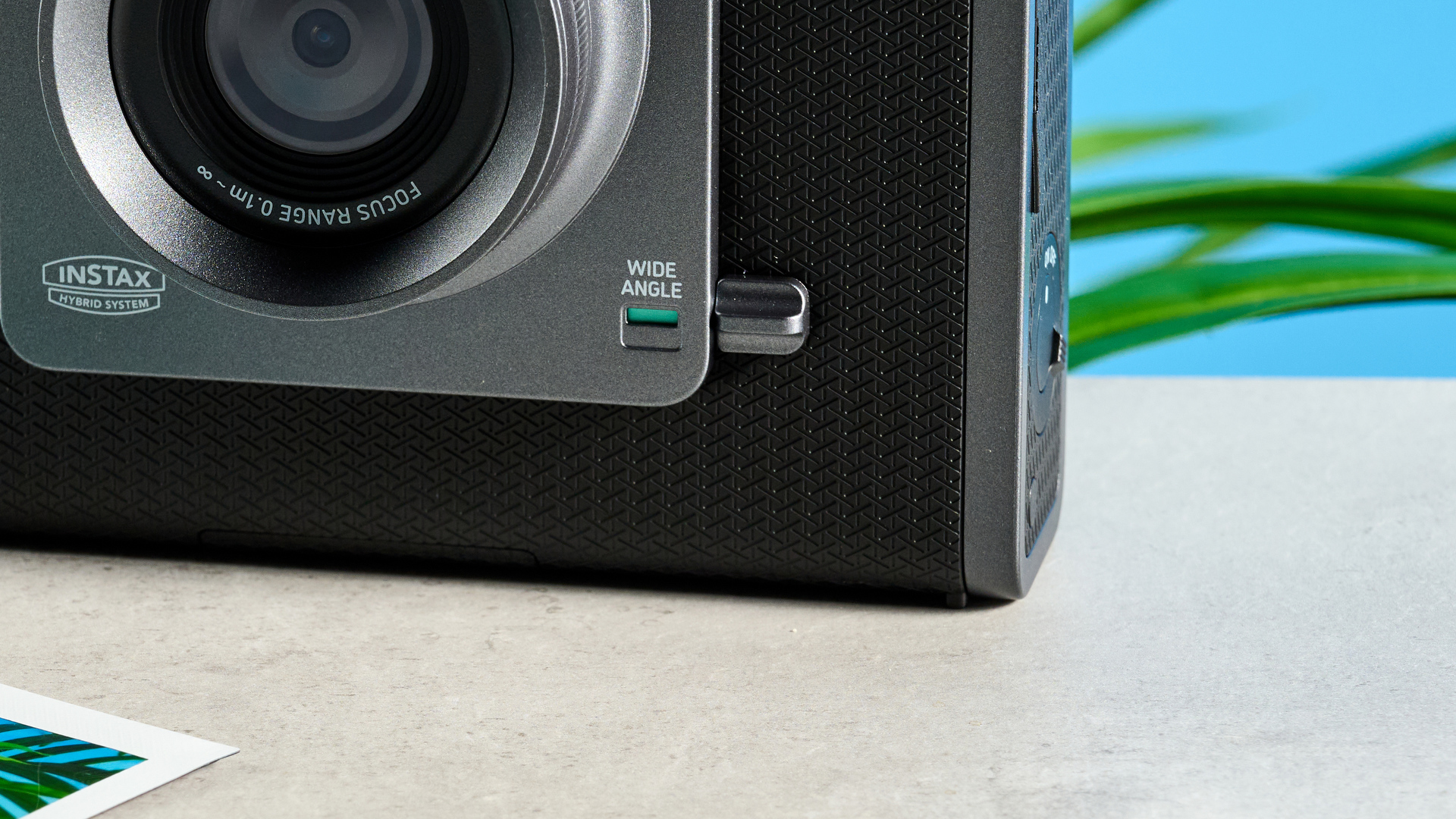
Like I said, the Instax Wide Evo is fitted with a wide 16mm fixed-focus lens so it’s ideal for landscapes and group portraits. It’s worth noting that you can achieve this length only in the integrated Wide Angle mode which, I have to say, works really well, as you’ll see in the image quality section below.
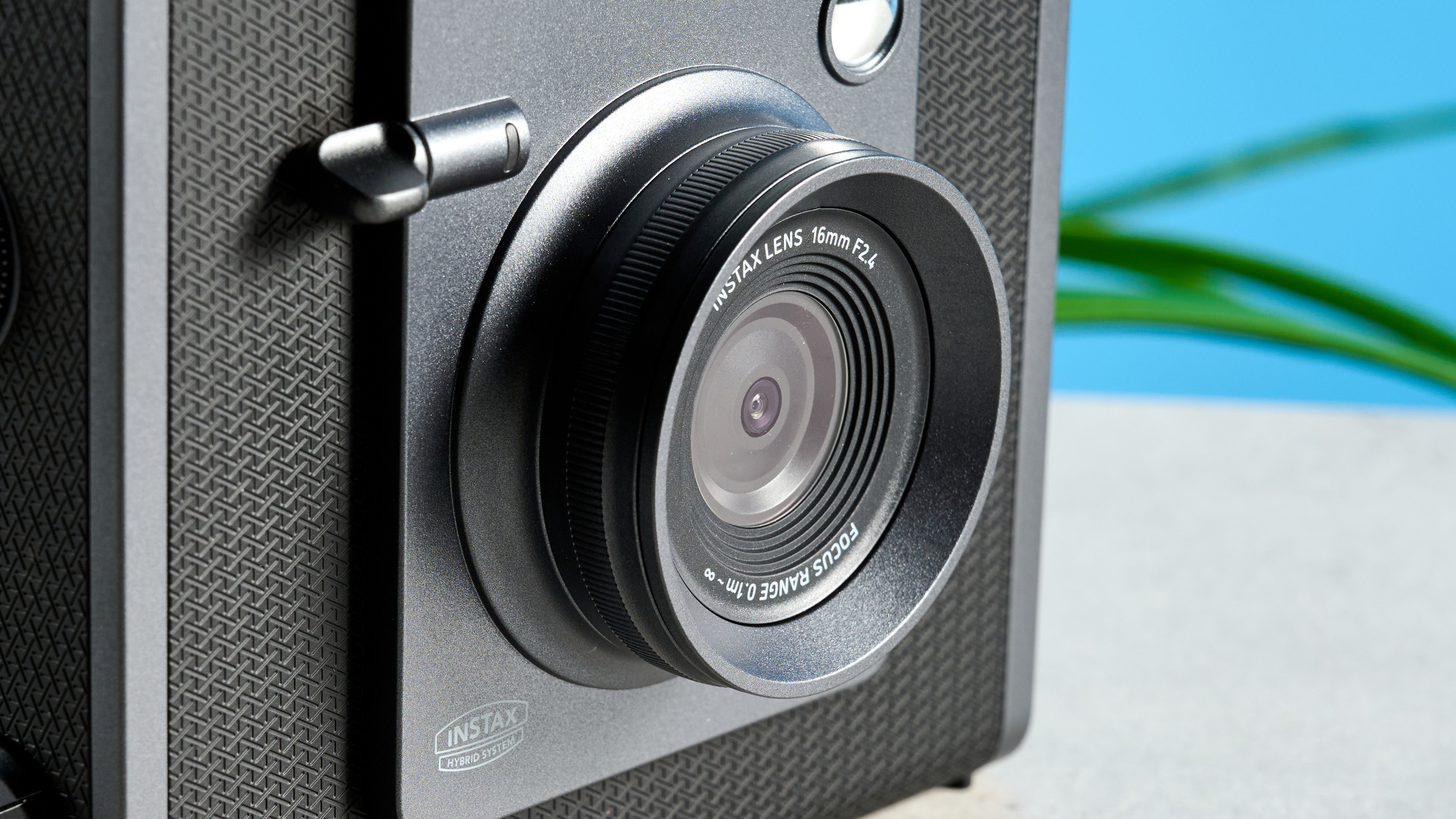
The Instax Wide Evo has a fixed f/2.4 aperture which performs decently in low-light conditions. It isn’t as wide as the Instax mini Evo’s f/2 aperture, which will let more light through the lens, improving low light performance. However, the Wide Evo also has a built-in flash to aid in dimly lit environments.
Fujifilm Instax Wide Evo review: Controls

The Fujifilm Instax Wide Evo has a straightforward control scheme which you quickly get accustomed to. Right next to the lens, you’ll find the new shutter release button. Unlike the Instax mini Evo which had two shutter buttons, you get just one here. Fujifilm has opted for a lever-style shutter control: push straight down to focus and push a little more to take a photo. While it looks cool, it isn’t very practical. I found it awkward to use while taking selfies and it took some time to focus on the subject, so I missed some candid moments.
There’s a dial around the lens known as the Degree Control dial, which lets you change the strength or directionality of the effect.
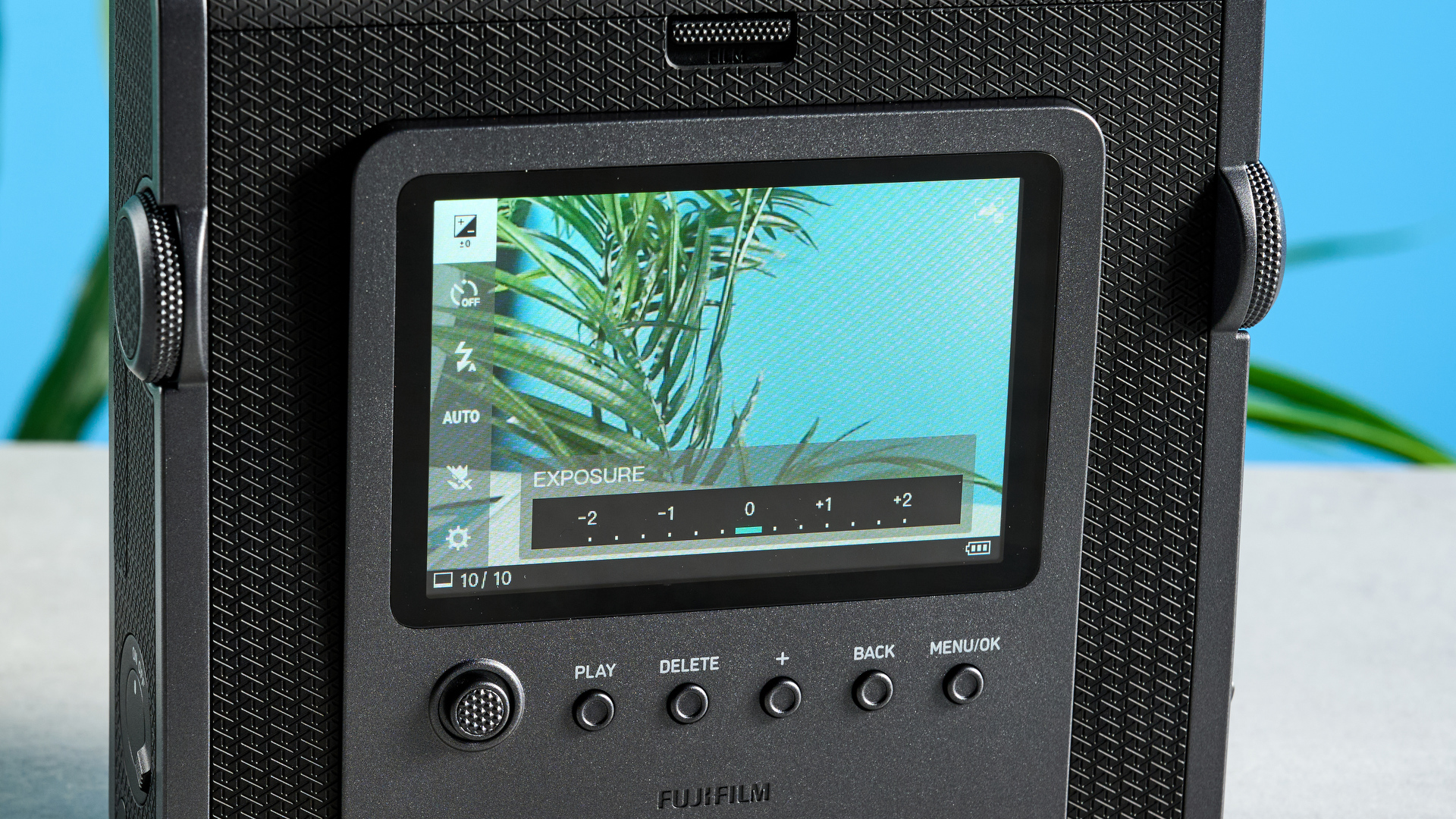
On the left and right edges of the Instax Wide Evo, you’ll find two dials: one to choose from 10 filters and the other to choose from 10 lens effects. Combined, you get 100 effect combinations for any and all situations.
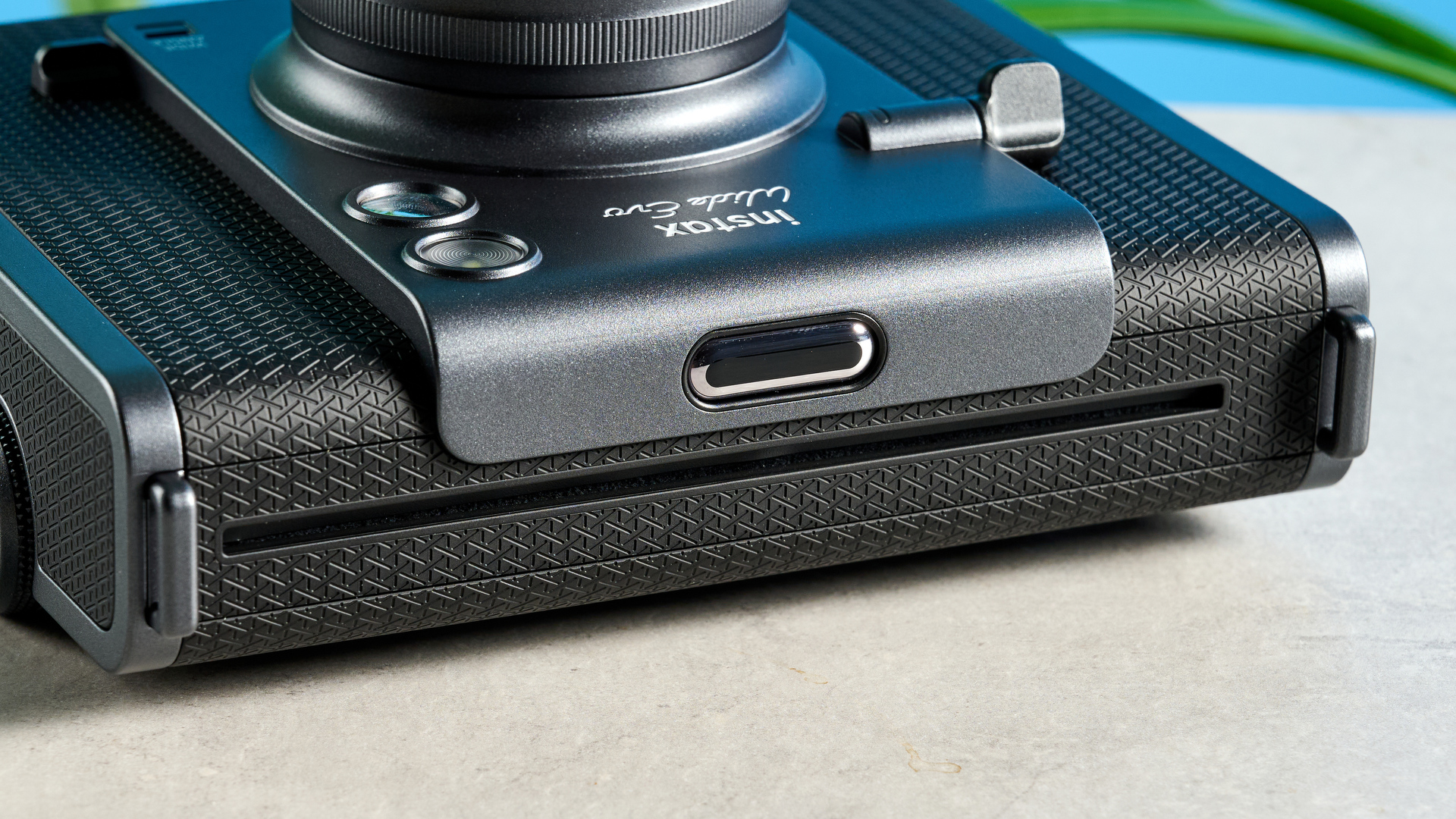
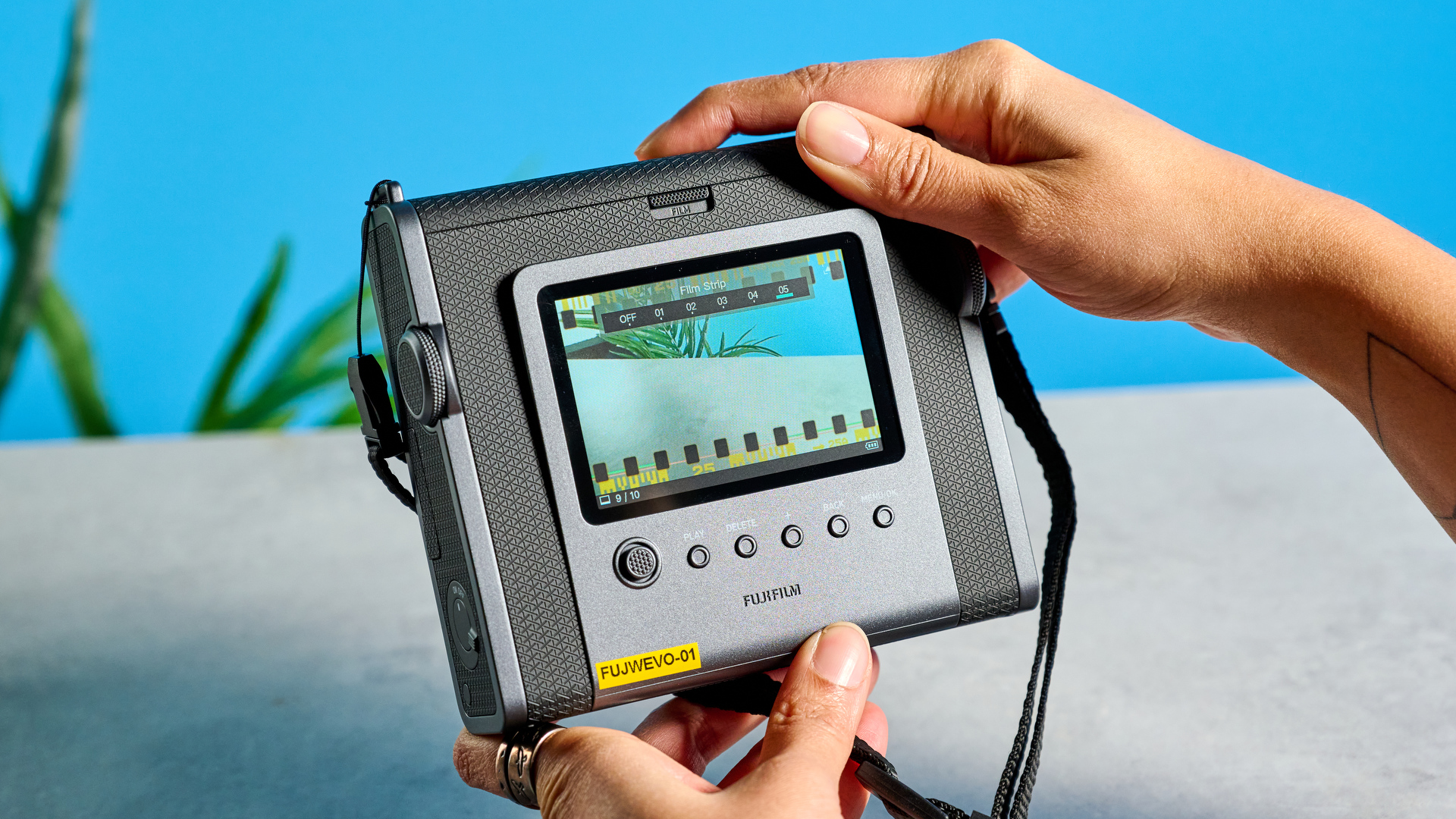
A new addition is the button on top which lets you choose one of six film styles: standard, cinematic, a classic film strip, a traditional date/time stamp format, a contact sheet look, and a vintage collodion process effect. These can be fun to experiment with.
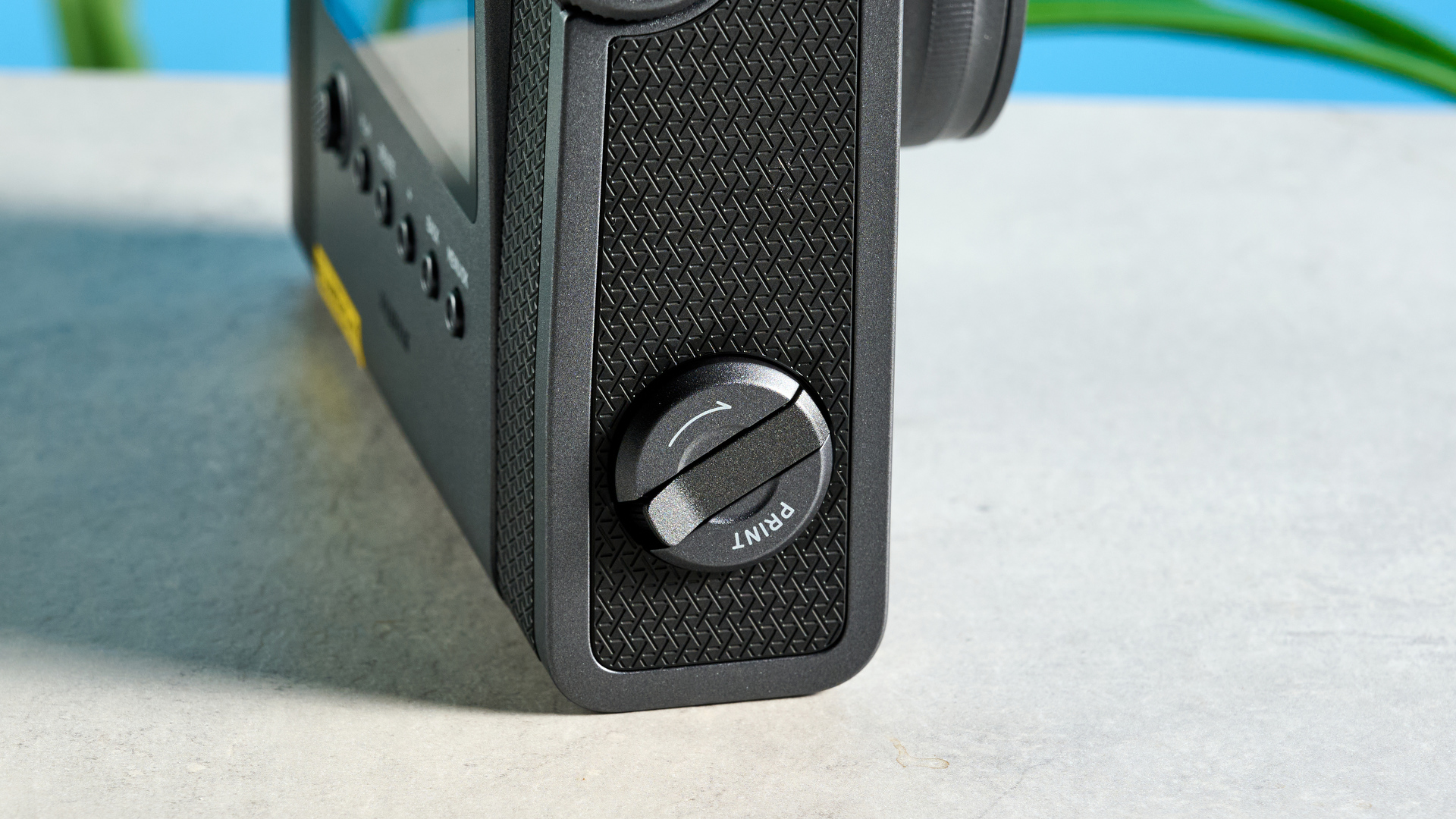
While the Instax mini Evo has a print lever which is much more fun than a standard print button, the Instax Wide Evo has a print crank, similar to the ones you find on film cameras to load and unload a film roll. This is my favorite feature. When you start cranking it, you'll see a meter fill up on the right-hand side of the LCD screen and then an animation showing the print ejecting. It's a small thing but it makes the user experience a lot better.
The back of the camera is taken up by the 3.5-inch LCD screen and navigation buttons. All of these give tactile feedback when pressed and are very responsive. The screen displays useful information, like the filters used. It also shows a little icon to indicate whether a photo has already been printed — I found this really useful as I ensured I didn’t print the same image twice.
Overall, I love the Instax Wide Evo’s control scheme but the shutter release has left a sour taste in my mouth. I would have much preferred regular buttons instead.
Fujifilm Instax Wide Evo review: Image & print quality

The Fujifilm Instax Wide Evo’s image and print quality are absolutely fantastic. It takes great photos and the wide format captures a lot of the scene with faithful color reproduction, as you can see in the examples above. I love how the camera has captured the different shades of green in the first photo and the multi-colored rose petals really pop in the second.

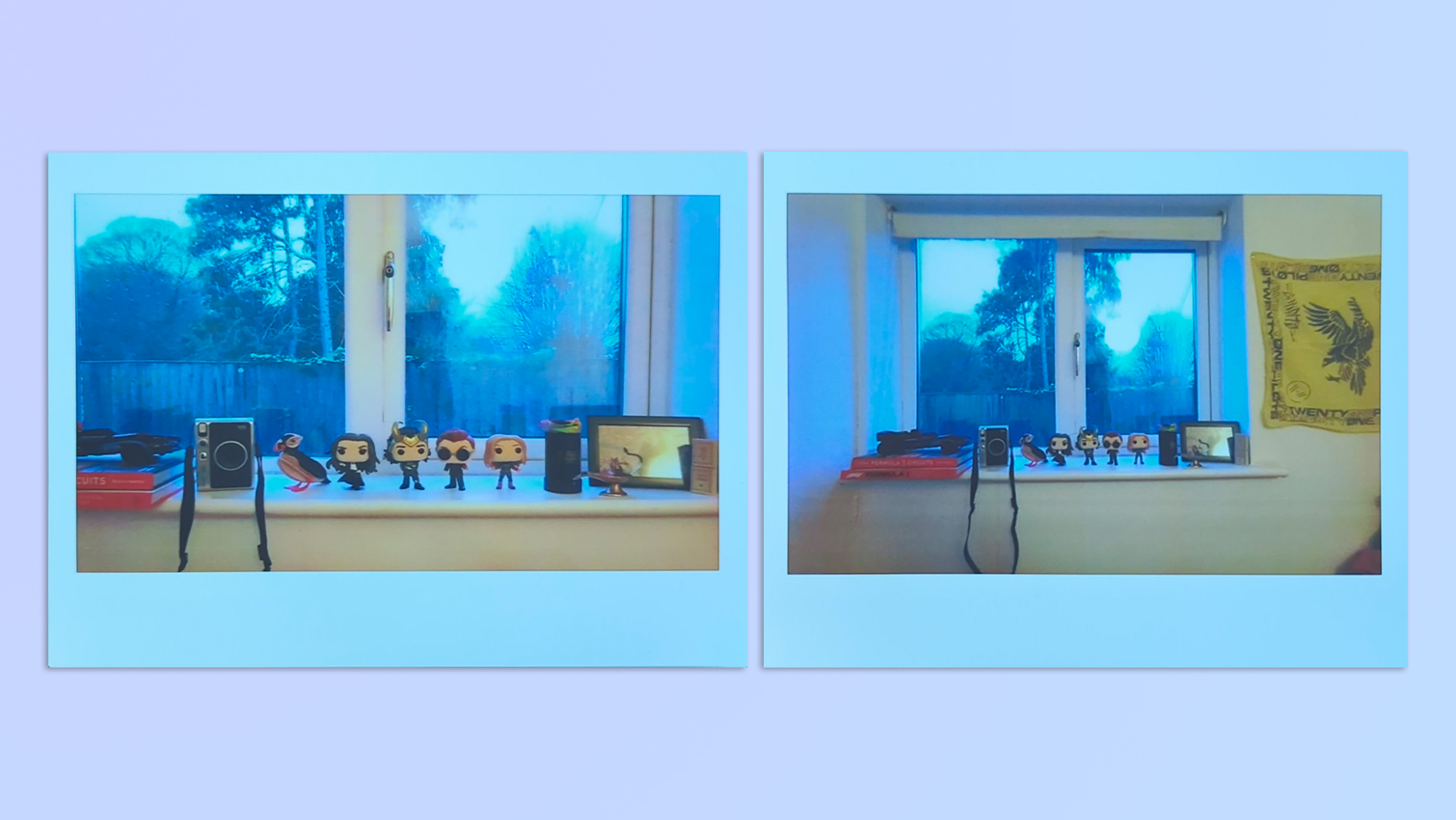
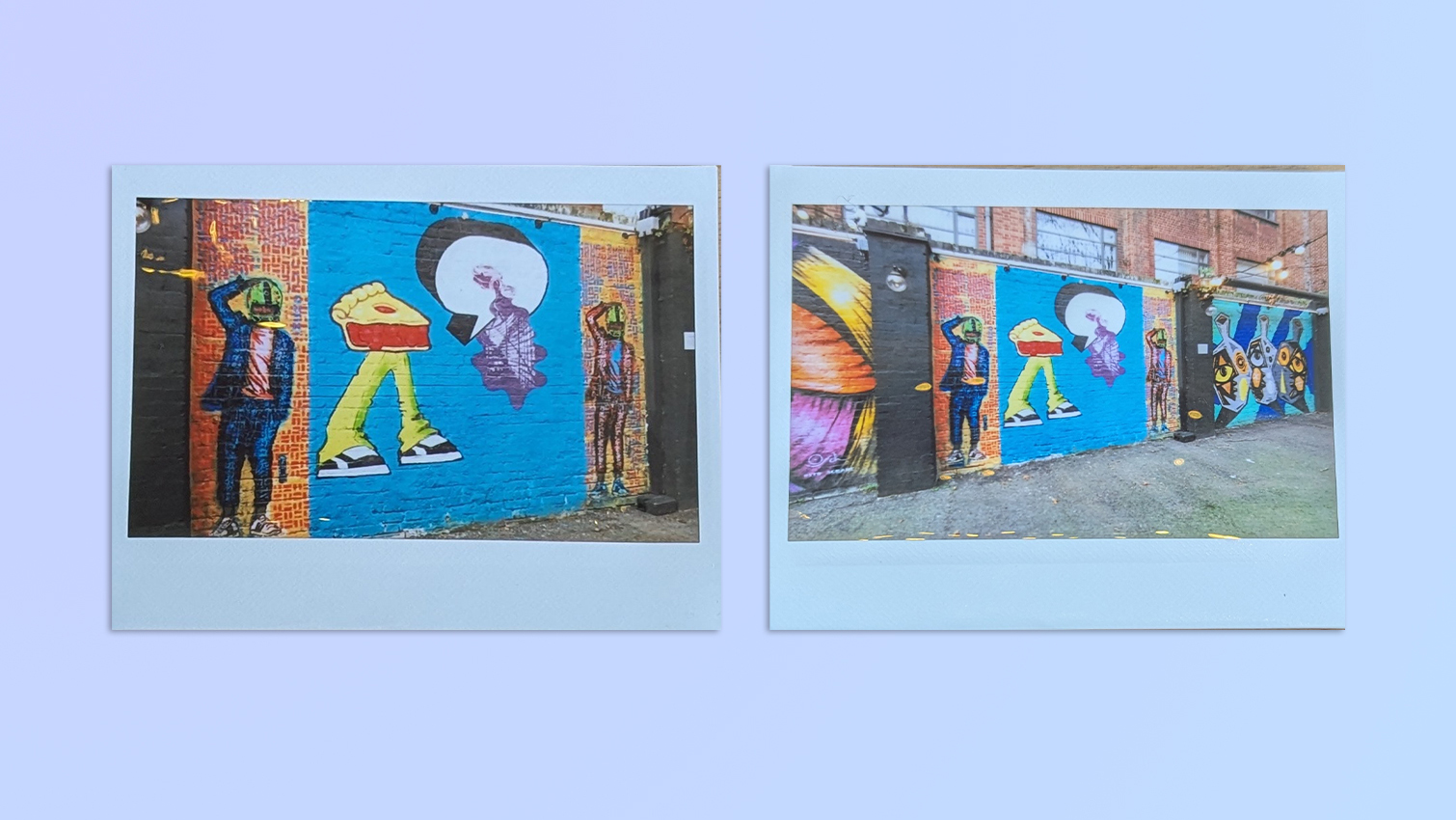
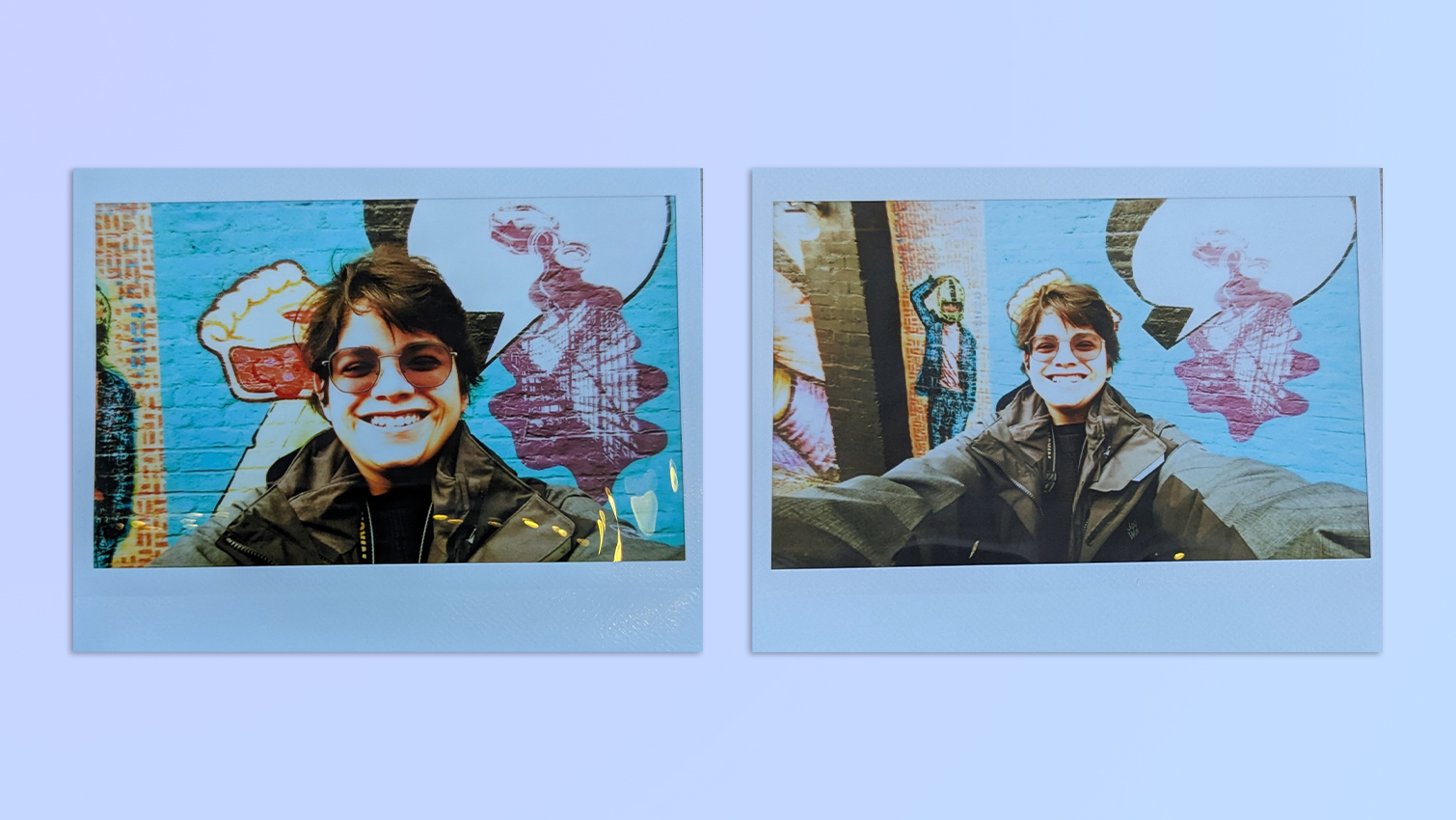
The new integrated Wide Angle mode is the star attraction here as it enables you to use the full field of view of the wide 16mm lens, and it works very well. You can see the difference between Normal and Wide Angle modes in the slides above. There is some barrel distortion (when straight lines appear abnormally curved outwards from the center of the image) when photos are shot in the latter, but it doesn’t ruin images much. And it lets you add a lot more context to your photos.


As I mentioned earlier, the Instax Wide Evo allows you to choose from 100 different effect combinations, so you can get really creative. You can see a few examples of the effects available above. I’ve loved playing with Color Shift and Double Exposures, and the Monochrome filter too. These are similar to the ones on the Instax mini Evo, but you get a new Degree Control dial to change the intensity of the effect — handy if you don’t want your photos to look too edited.
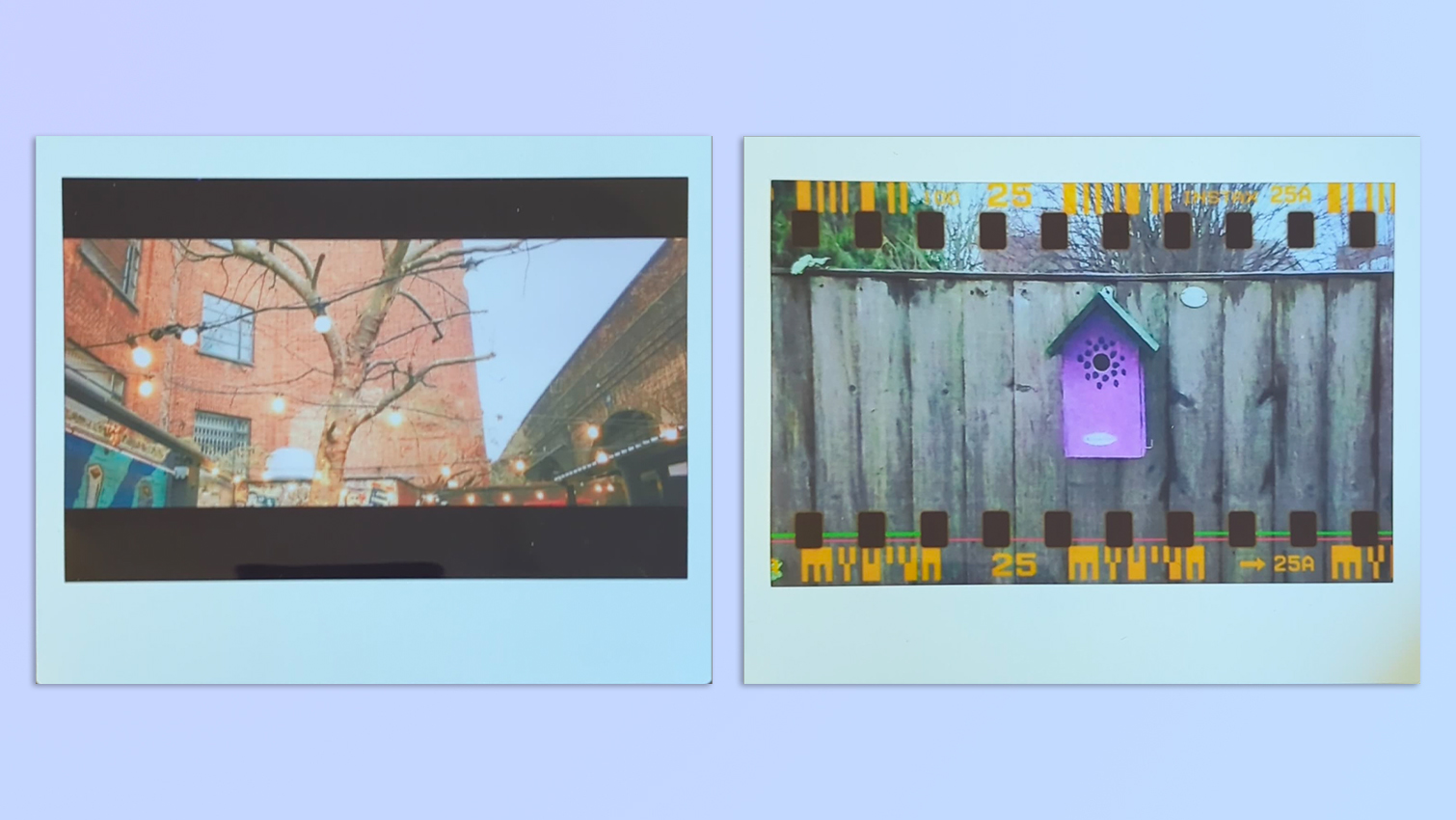
Another new addition is that you can choose one of six film styles — think of these like borders. In the examples above, you can see the cinematic style and the film strip look. I didn’t find them especially exciting but it’s nice to know the option’s there.
The Instax Wide Evo’s low-light performance is decent too. The built-in flash is very useful, especially when shooting at night, with a range of 30cm to 1.5m.
Fujifilm Instax Wide Evo review: App
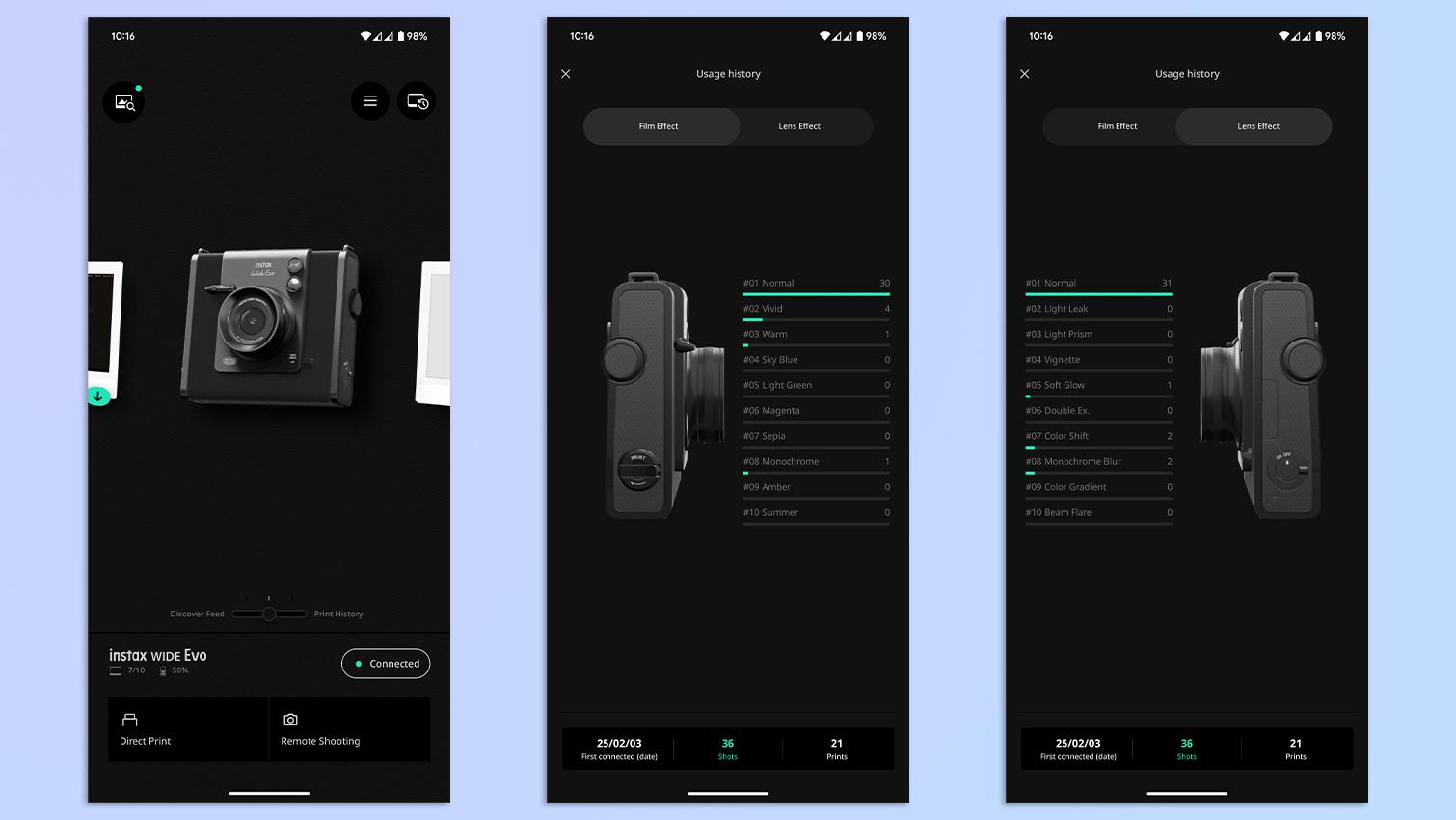
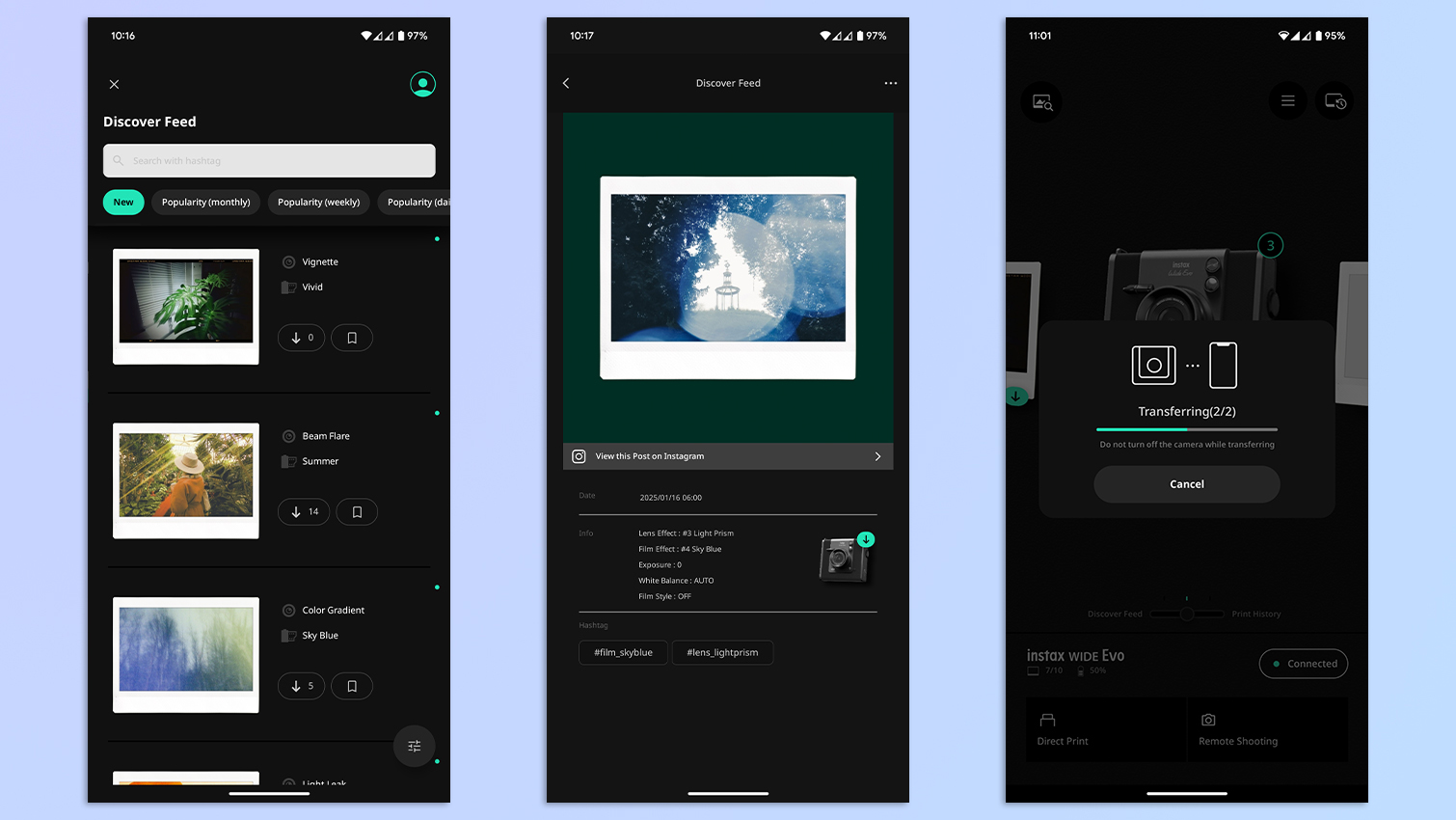
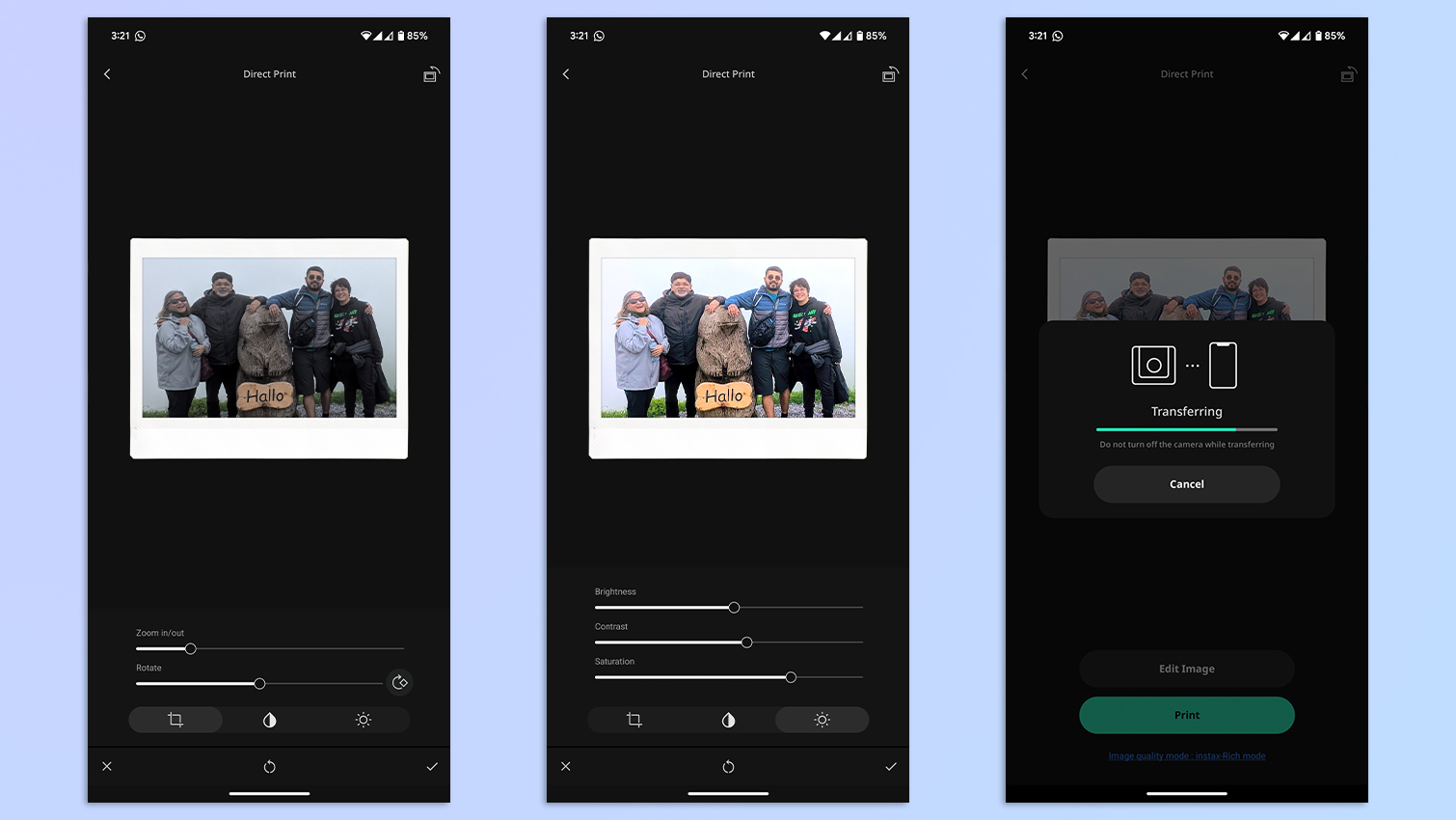
The Fujifilm Instax Wide Evo is accompanied by an app of the same name, available on iOS and Android, and it builds on the success of the Instax mini Evo app. You can do the usual things, like print photos from your smartphone, remotely trigger the shutter, and transfer printed images to your phone. But there’s more. You can view the lens filters and effects you used on a specific photo, see stats (like how many photos you’ve taken and printed), and scroll through the new Discover feed. Here, you can see photos taken by other users worldwide and the shooting settings. This could be great for inspiration or if you just like looking at pretty photos.
But you know what’s disappointing? The app hasn’t fixed one of my gripes I had with the Instax mini Evo: you can only transfer digital copies of printed images to your smartphone. Given the Instax Wide Evo is so pricey, it’d be nice to have the ability to transfer all the photos you take. The Instax mini LiPlay ($149), on the other hand, is a cheaper hybrid camera that lets you transfer all photos to your smartphone, regardless of printing status.
Fujifilm Instax Wide Evo review: Film cost & yield
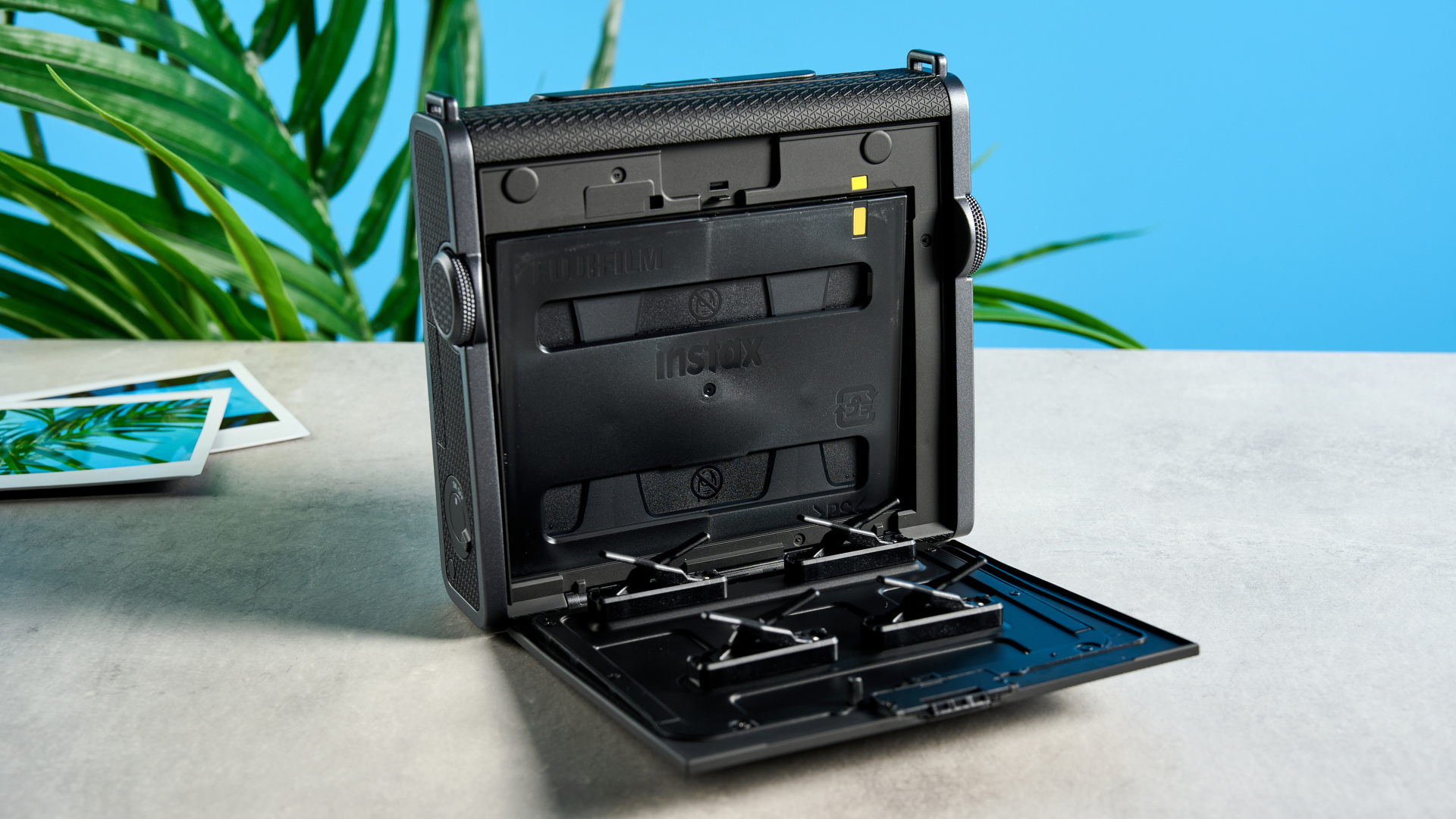
The Fujifilm Instax Wide 400 uses Instax Wide film packs, which generally cost about $18 / £16 per double film pack (20 pieces of film) — so you’re paying $1.11 per picture. This is similar to Polaroid’s square film, where you pay approximately $1.12 per print.
Alongside the camera, Fujifilm also launched the new Wide Brushed Metallics film, 10 exposures of which will cost you $24 / £9 — pricier than white-border film but worth the spend if you like the metallic look.
Fujifilm Instax Wide Evo review: Battery life
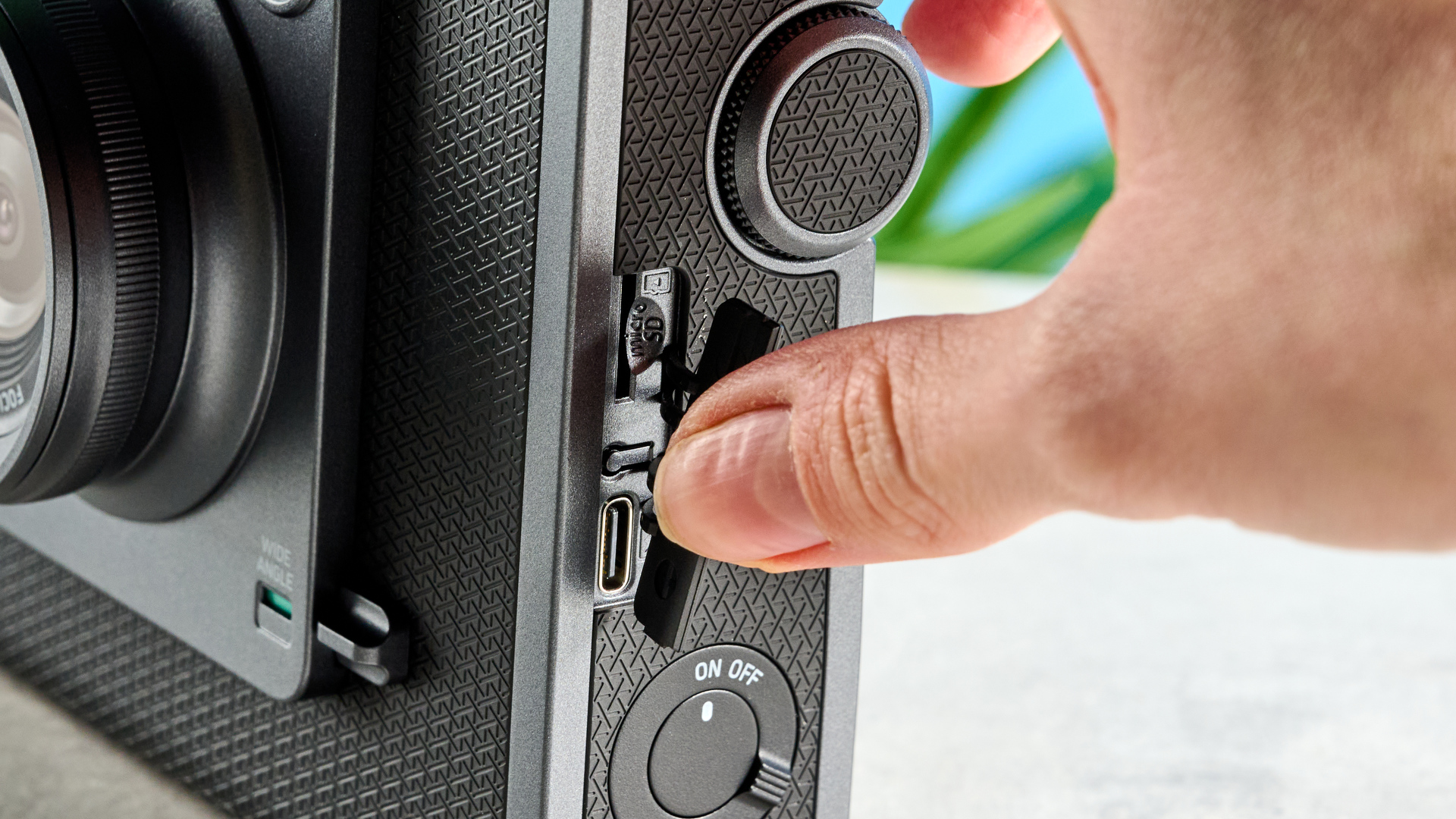
Equipped with a rechargeable Lithium-ion battery, the Fujifilm Instax Wide Evo has the same battery life as the Instax mini Evo. A single charge will last you nearly 100 shots — depending on usage conditions — and it takes under two hours to go from zero to 100% when charged with a 30W USB-A to USB-C charger. The Instax Wide Evo has the joint best battery life with the Instax mini Evo and Instax mini 99.
Fujifilm Instax Wide Evo review: Verdict
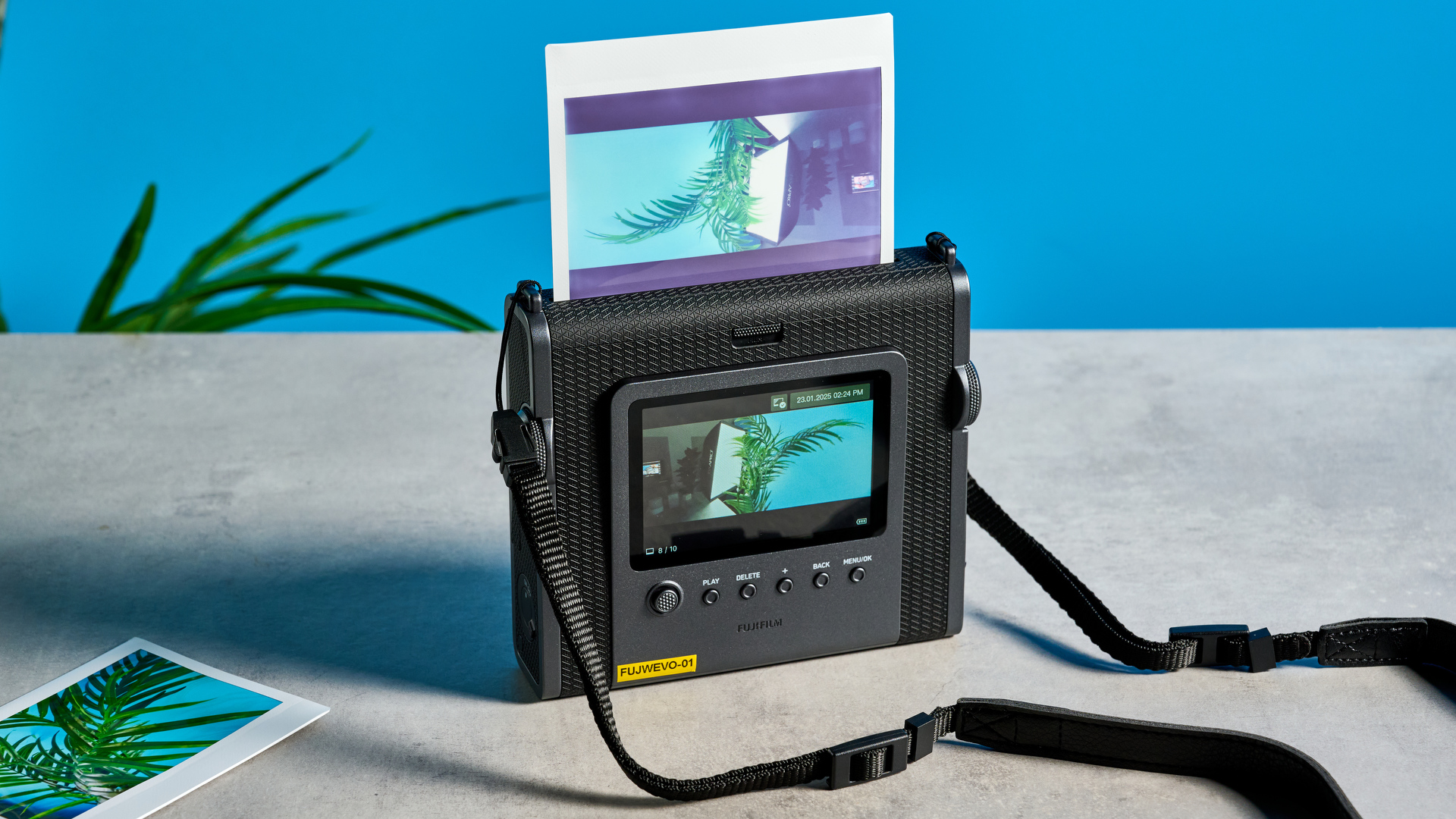
The Fujifilm Instax Wide Evo sounds like my kind of camera. It combines two things I love: the Instax mini Evo and wide film. It’s crafted beautifully and is comfortable to use. The image and print quality are stunning, with 100 effect combinations and six film styles at your disposal, fit for any scene. The new Degree Control dial works well too, as does the integrated Wide Angle mode which lets you go even wider.
Alas, the camera isn’t perfect. Its new shutter release button is awkward to use, especially when taking selfies, and the camera takes some time to focus on the subject. The camera also retains many of the Instax mini Evo’s disappointing features while costing nearly twice as much: 100-shot battery life, 45-shot internal storage, and the ability to transfer only printed photos to your smartphone.
At the end of the day, the Instax Wide Evo is a good camera, but it could’ve been so much better.







